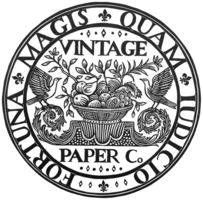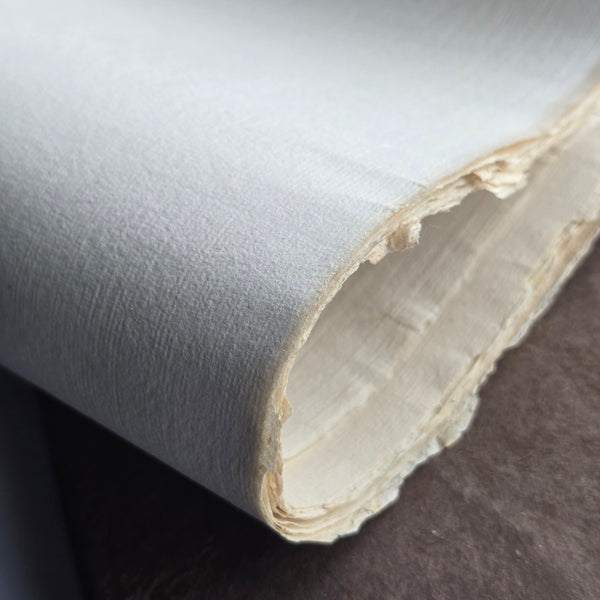
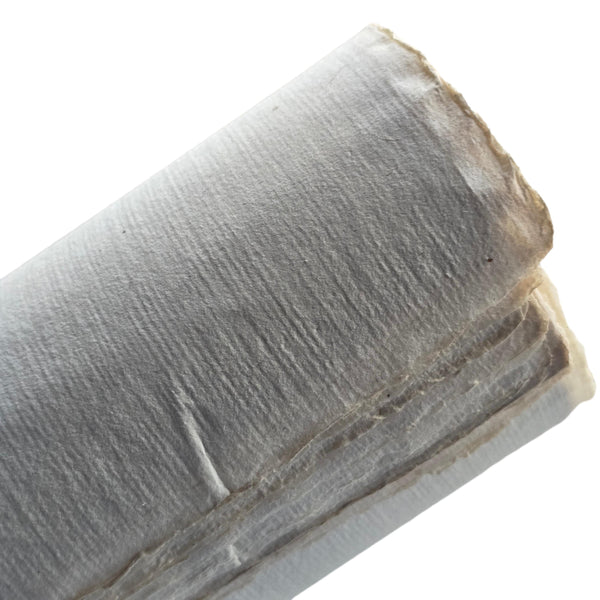
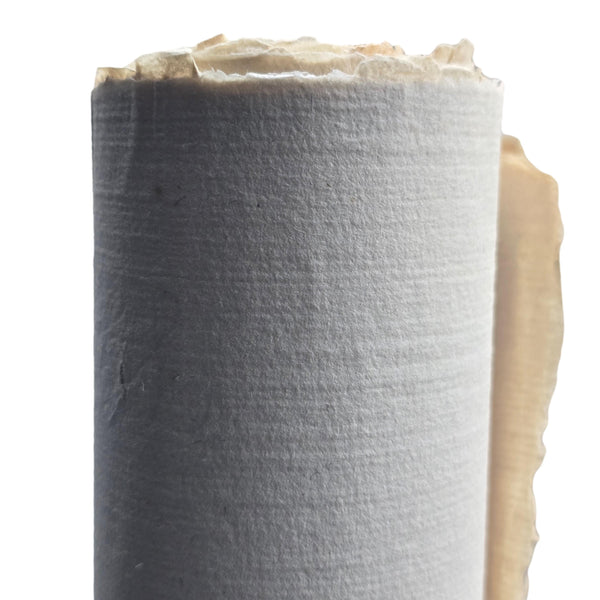
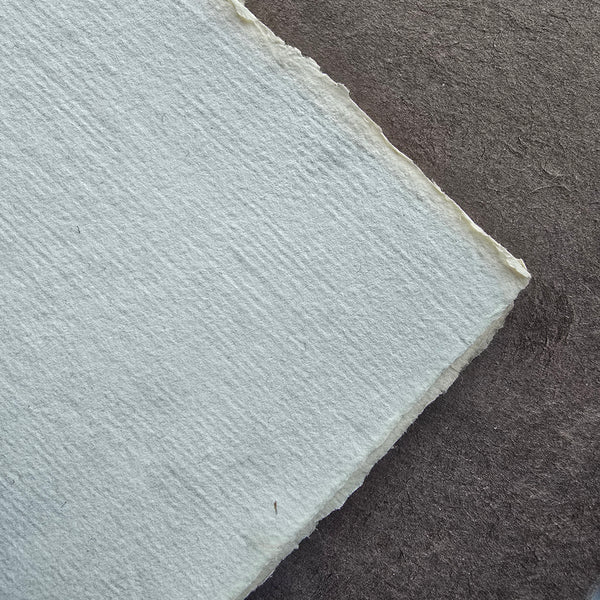
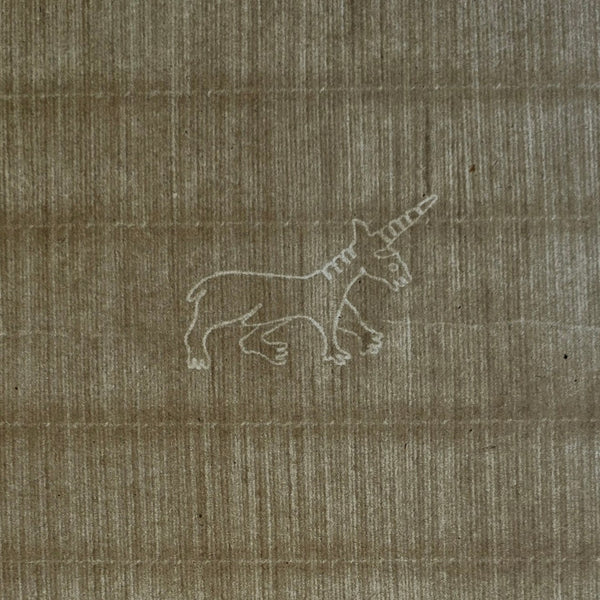
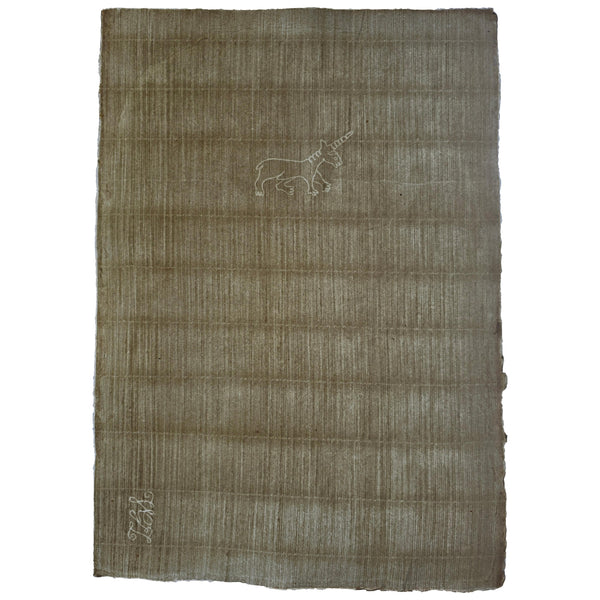
Van Gelder Picasso
PRICED PER SHEET
This is a handmade laid paper, made before 1952 by Van Gelder Zonen before 1952 at their Apeldoorn mill, known as De Eendracht.
Van Gelder Zonen were a prominent Dutch papermaking company, established in 1685, closed in 1981.
The Apeldoorn mill specialized in fine rag paper (made from linen and cotton rags) for drawing, painting, printmaking, and writing, a tradition that began when Van Gelder acquired the mill in 1869. The paper’s laid texture, with visible chain lines, is typical of artisanal production, and ideal for fine art prints like aquatint etchings, letterpress, screen prints etc.
The exact date of manufacture is uncertain but spans from the 1800s to the 1950s. Van Gelder Zonen installed a paper machine at Apeldoorn in 1899, but they continued some handmade production into the mid-20th century for specialty orders, as evidenced by the paper’s use in 1952 for La Chèvre. Handmade paper production at Van Gelder likely ceased by the late 1950s or early 1960s, as the company fully transitioned to industrial methods.
Known Use:
The only documented use of this particular VGZ paper was by Editions de Beaune, a Parisian art gallery, to produce a limited run of 50 aquatint etching prints of Picasso’s La Chèvre in 1952.

This print, cataloged as Bloch 697, was a sugarlift aquatint with scraper, measuring 3.75 x 5 inches (image size) on a 8.5 x 12-inch sheet, as noted in the RoGallery listing.
Editions de Beaune likely sourced the paper from Van Gelder Zonen, possibly through a connection with Louise Leiris, who published many of Picasso’s prints in the 1950s and might have commissioned a shared batch of paper.
Watermarks:
The paper features two watermarks: "VGZ" (Van Gelder Zonen) and a unicorn.

The "VGZ" watermark confirms the paper’s origin, as Van Gelder Zonen frequently used their initials or full name as watermarks from 1845 onward.

The unicorn, a common motif in Dutch papermaking since the medieval period, likely serves as a traditional symbol rather than an indicator of the end user. It may have been included to evoke a sense of historical authenticity, aligning with medieval practices where watermarks often signified paper size or type (e.g., for printmaking), or to specifically denote this paper’s suitability for fine art prints like etchings.
Erroneous Attribution to Johann Veldener:
A recent sale of an unsigned, non-numbered print from the numbered run of 50 (possibly from the collection of Larry Saphire, as per RoGallery) mistakenly attributed the printing to Johann Veldener of Utrecht, likely due to the unicorn watermark.
Veldener, a 15th-century Dutch printer (active in the 1470s, died in the 1490s), often used paper with unicorn watermarks, a common medieval motif. However, he could not have been involved in printing La Chèvre in 1952, centuries after his death. The attribution error stems from the historical association of unicorn watermarks with Veldener’s era, but in this case, the unicorn simply reflects a traditional Dutch watermark used by Van Gelder Zonen, not a connection to Veldener himself. The actual printer of La Chèvre remains unknown but was likely a contemporary of Editions de Beaune in 1952, possibly working in Paris or the Netherlands.
Current Possession:
VPCo possesses approximately 20 sheets of this paper, which are significant due to their rarity, historical use by Picasso, and artisanal quality.
The paper’s value is enhanced by its documented connection to La Chèvre, the "VGZ" watermark confirming Van Gelder Zonen’s production, and the unicorn watermark tying it to Dutch papermaking traditions.
Size: 17 x 12 inches
You can read a lot more about traditional paper sizes in our blog.
Stock is VERY limited - these are the only sheets that we will ever sell.
PRICED PER SHEET
